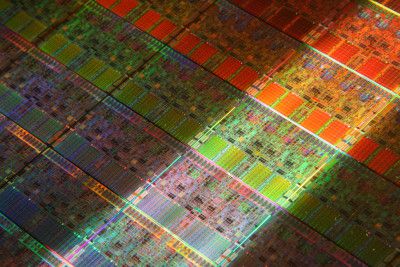From our front-page news:
We've talked a bit about memory on Nehalem, but it appears there's a few big caveats regarding overclocking we didn't know about. At the Intel Developer Forum in August, we learned that the skies the limit when it comes to memory overclocking, and I was told directly that DDR3-2000 kits had been tested in Intel's own labs on Nehalem. The problem is though, what about the voltage required to do so?
According to pictures of the ASUS P6T Deluxe as found on a Chinese forum, going beyond 1.65v on the memory is dangerous, but it's difficult at this point to understand why. With Nehalem, the memory controller is built into the CPU itself, unlike current Intel motherboards where it's built into the chipset. So it's easy to assume that the voltage is shared by both the CPU and memory, and that's why going too high could damage not the memory, but the CPU.
But the issue is that the CPU itself in no way would require 1.50v - 1.65v to operate, so the DIMM slots would have to be on a different power plane. There must be another limiting factor, though, because if ASUS puts a warning like this on their motherboard, there has got to be a good reason for it. It's going to be interesting to see how things play out, because as it stands, most performance kits want far more than 1.65v.
We can go back to our findings about the new three-channel memory feature though, because as we saw at IDF, the bandwidth on even a DDR3-1066 kit was huge... potentially negating the need for a high-end kit at all.

Mushkin’s VP Steffen Eisenstein said that they are re-designing specifically for the X58/Core i7 combo, and that their kit should be out some time next month… in Tri-Channel packs. Other memory vendors across the globe are claiming their kits are still undergoing certification with motherboard vendors so they still don’t know whether they qualify or not.
Source: The Inquirer
According to pictures of the ASUS P6T Deluxe as found on a Chinese forum, going beyond 1.65v on the memory is dangerous, but it's difficult at this point to understand why. With Nehalem, the memory controller is built into the CPU itself, unlike current Intel motherboards where it's built into the chipset. So it's easy to assume that the voltage is shared by both the CPU and memory, and that's why going too high could damage not the memory, but the CPU.
But the issue is that the CPU itself in no way would require 1.50v - 1.65v to operate, so the DIMM slots would have to be on a different power plane. There must be another limiting factor, though, because if ASUS puts a warning like this on their motherboard, there has got to be a good reason for it. It's going to be interesting to see how things play out, because as it stands, most performance kits want far more than 1.65v.
We can go back to our findings about the new three-channel memory feature though, because as we saw at IDF, the bandwidth on even a DDR3-1066 kit was huge... potentially negating the need for a high-end kit at all.

Mushkin’s VP Steffen Eisenstein said that they are re-designing specifically for the X58/Core i7 combo, and that their kit should be out some time next month… in Tri-Channel packs. Other memory vendors across the globe are claiming their kits are still undergoing certification with motherboard vendors so they still don’t know whether they qualify or not.
Source: The Inquirer
